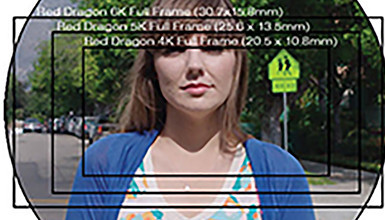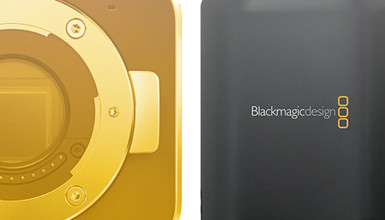Technical Standards
Tutorials & Guides
At AbelCine, one of the most common questions our techs get these days is about lens coverage with different cameras. It’s no wonder that we get these inquiries, as there is an endless stream of new cameras coming out, all of which have different sensor sizes and specs. We frequently get questions like this: “Does my 16mm lens cover the Blackmagic Cinema camera sensor?” or “Does my lens cover 6K on the Red Dragon camera?”
Tutorials & Guides
Many cameras today have a Rec.709 color mode or LUT mode included, which is great for making a pleasing image on a monitor. Since Rec.709 is a standard defined by the ITU (International Telecommunication Union), we might assume that the Rec.709 mode in every camera would look about the same - but this never seems quite true.
Tutorials & Guides
There is no denying that anamorphic has come back in a big way this year, and it is more accessible than ever. With the increase of anamorphic glass in the market and the 4:3 sensor of the ALEXA Plus 4:3, more filmmakers are able to find an affordable way to get the anamorphic look.
Tech News
At this year's IBC show in Amsterdam, Vision Research officially unveiled the production model of the Phantom Flex4K. A couple of our clients and friends have recently gotten their hands on a prototype of the camera, so check out the footage and behind the scenes photos below.
Tutorials & Guides
Recently, a client who purchased a Sony PMW-F3 from AbelCine gave me a call with a “quick question”. He had just updated his camera with the S-Log recording option and discovered that he could now set his camera’s sensitivity in a number of different ways. He could set the camera’s gain, ISO or, with the S-Log mode turned on, he could set an Exposure Index (EI). He wanted to know the difference between these settings, and which was best to use.
Tutorials & Guides
At least once or twice a week I'm asked by clients if Super-16 lenses can be used with the Blackmagic Design Cinema Camera. It's understandable that they ask; the camera is an interesting and affordable new option but the sensor size is unique. Plus, many people have excellent S-16 glass gathering dust on the shelf. Marrying the two would be convenient and cost-effective.
Tutorials & Guides
The new Canon C500 is just hitting the streets, offering both internal 50 Mbps 422 recording, as well even higher quality outputs. The camera can output HD & 2K in 4:2:2 up to 120p, or 4:4:4 up to 60p, and uncompressed 4K Raw data up to 60p and 120p at half vertical resolution.
Tutorials & Guides
In the descriptions of the new PMW-F5 and PMW-F55 cameras, Sony notes that the F55 sensor shares the same CFA as its big brother, the F65. Some people may confuse this to mean that the F55 shares the same sensor as the F65, but that is not the case. So what is a CFA and how does it differ between the F5 and F55?
Tutorials & Guides
Bokeh is one of the more misunderstood concepts in optics. The term was coined for photographic use in 1997, from the Japanese word boke, meaning blur or haze. In recent years, "bokeh" has been simplified to refer to how the shape of a lens' iris is rendered in out-of-focus points of light in an image, such as streetlamps at night. Much is made of how many iris blades are used in a lens and how round the iris aperture is as it is stopped down, but these are only minor aspects of bokeh.























